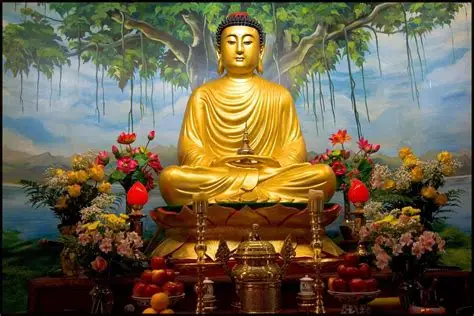India, the birthplace of Buddhism, hosts a rich tapestry of festivals that honor the journey of Siddhartha Gautama—from his birth and enlightenment to his teachings and Mahaparinirvana. Buddhist Festivals in India are not only sacred observances but also cultural events that bring together monks, pilgrims, and curious travelers in a spirit of peace and mindfulness.
Whether you’re attending a full moon ceremony in Bodh Gaya or witnessing masked dances in Ladakh, these festivals offer a profound glimpse into Buddhist philosophy and community life.
1. Buddha Purnima (Vesak) – Birth, Enlightenment, and Nirvana
-
When: Full moon day in April or May
-
Where: Bodh Gaya, Sarnath, Kushinagar, and across India
-
Significance: Commemorates Buddha’s birth, enlightenment, and passing
-
Celebrations: Prayer meetings, sermons, meditation, and lantern lighting
This is the most important Buddhist festival and draws thousands of devotees to sacred sites.
2. Losar – Tibetan New Year
-
When: February or March (based on lunar calendar)
-
Where: Ladakh, Dharamshala, Sikkim, and Arunachal Pradesh
-
Significance: Marks the beginning of the Tibetan lunar calendar
-
Celebrations: Masked dances, rituals, family gatherings, and offerings
Losar blends Buddhist rituals with Himalayan cultural traditions.
3. Hemis Festival – Honoring Guru Padmasambhava
-
When: June or July
-
Where: Hemis Monastery, Ladakh
-
Significance: Celebrates the birth of Padmasambhava, who introduced Buddhism to Tibet
-
Celebrations: Cham dances, thangka displays, and vibrant costumes
This is Ladakh’s biggest monastic festival and a visual spectacle of devotion.
4. Ullambana – Ancestors and Compassion
-
When: August or September
-
Where: Mahayana Buddhist communities in India
-
Significance: Honors ancestors and spirits in need
-
Celebrations: Food offerings, prayers, and rituals for the departed
Ullambana reflects the Buddhist value of compassion and interconnection.
5. Asalha Puja (Dhamma Day) – First Sermon
-
When: July (full moon day)
-
Where: Sarnath and Theravada centers
-
Significance: Marks Buddha’s first sermon at Deer Park
-
Celebrations: Dharma talks, meditation, and community gatherings
This festival celebrates the turning of the Wheel of Dharma.
6. Kathina – Robe Offering Ceremony
-
When: October or November
-
Where: Theravada temples across India
-
Significance: End of monastic retreat (Vassa)
-
Celebrations: Laypeople offer robes and supplies to monks
Kathina strengthens the bond between monastic and lay communities.
7. Magha Puja – Sangha Day
-
When: February (full moon day)
-
Where: Theravada Buddhist centers
-
Significance: Honors the spontaneous gathering of 1,250 enlightened monks
-
Celebrations: Candlelight processions, teachings, and merit-making
Magha Puja emphasizes unity and the power of collective wisdom.
Travel Tips for Experiencing Buddhist Festivals in India
-
Plan Ahead: Festival dates follow lunar calendars and vary each year
-
Respect Rituals: Dress modestly and observe silence during ceremonies
-
Participate Mindfully: Join meditation sessions or volunteer at monasteries
-
Capture Moments: Photography is allowed in many places but ask for permission
Conclusion: Why Buddhist Festivals in India Are More Than Just Celebrations
These festivals are living expressions of Buddhist values—compassion, mindfulness, and community. From the serene chants of Buddha Purnima to the vibrant dances of Hemis, Buddhist Festivals in India offer a spiritual journey that transcends religion and touches the heart.
Whether you're a pilgrim, a traveler, or a seeker, these festivals invite you to pause, reflect, and celebrate the timeless teachings of the Buddha.



